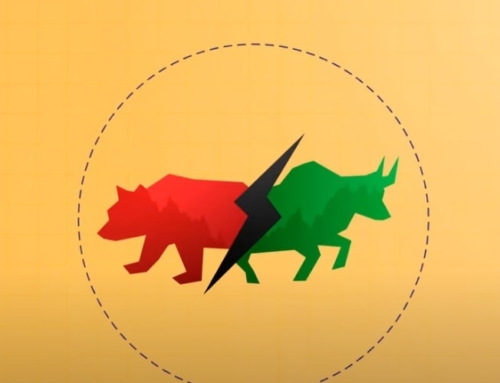What is the Face Value of a Stock?
 Definition
Definition
Every company declares the face value of a share at the time of issuance of shares in the market. This value is listed in the books as well as in certificates issued to the investor at the time of buying shares of the company.
A public listed company issues its shares/stocks through IPO (Initial Public Offering) and fixes the face value of the share. A minimum of Re 1 has been defined as the face value of the stock to be issued by any company in India (listed under IPO).
Companies can issue stock with a face value of Rs 10 (most common), Rs 5, Rs 2, Rs 100 or Re 1.
For example, the face value of some common stocks traded in India are:-
- Reliance Industries – Rs 10
- TCS – Re 1
- ICICI Bank – Rs 2
- ONGC – Rs 5
Key characteristics of the face value of a stock
- Face value is also termed par value or par.
- Face value is fixed by the company/the issuing party.
- Generally, the stocks are issued with a face value of Rs 10.
- The face value of a company is not the same as market value but is generally lower than its market value. (The market value of a share is the current value at which a share can be traded).
- The face value of a stock is not affected by any changes in the market price (either going up or down).
- The face value of a share is fixed (until the company decides to split or reverse-split the shares).
Why is face value important in the stock market?
Face value is an important factor as it helps in calculating the following
- Market value
- Share Premium
- Returns
- Interest payment
- Value of bonds and stocks
- The accounting value of a share and is used in the balance sheet of the company.
Where can we find the face value of a stock?
The face value of a company’s stock can be found on the
- Company website
- Websites of stock exchanges such as www.nseindia.com
- Financial websites (e.g. Yahoo Finance, Moneycontrol etc.)
What is splitting the face value of a share?
The face value of a stock can be changed by a company by carrying out a ‘Stock Split’. The companies have the right to split the face value of the share to Rs. 5, 2, or 1. The Split value is basically the division of face value into a predefined ratio e.g. 1:2 or 1:5
As an example, a company with a face value of its share as Rs 10, decides to split the face value in the ratio of 1:2. Now double the original number of shares will be available for investors with Rs 5 as the new face value.
This implies that a stock split reduces the face value and increases the number of shares available for investors.
To split stock, the companies need to follow a procedure, advising shareholders regarding the split ratio.
- Announcement of stock split on a particular date also called a record date
- Define the new face value
- Few weeks after the record date, the stocks will be traded at the new face value
Another possibility post Stock Split is the Reverse stock split, which helps in reducing the number of shares and increase the face value basis, the multiplying factor defined by the company.
Summary
In conclusion
- Face value is defined as the value of shares in the company books
- Face value is specified on stock certificates (mostly issued in digital format now) and defined on financial websites
- The most common face value of stocks is Rs 10, and the minimum face value defined by SEBI is Re 1.
- Face value helps in calculating market value, book value, premium, return and interest to be paid etc.
- Face value is not impacted by a change in market value.
- Face value can be changed (reduced/increased) only in the below-given scenarios
- Split Stock – if the value needs to be reduced in a predefined ratio by the company, hence increasing the number of shares along with a decrease in the stock face value
- A reverse split stock – reducing the number of stocks and increasing the face value
Subscribe to our channel Now.
Howdy!
If you’re here for the first time, let’s get introduced.
VRD Nation is India’s premier stock market training institute and we (Team VRD Nation) are passionate about teaching each and every aspect of investing and trading.
If you’re here for the first time, don’t forget to check out “Free Training” section where we have tons of free videos and articles to kick start your stock market journey.
Also, we got two awesome YouTube channels where you can continue the learning process.
Must-Read Articles
What is the Face Value of a Stock?
 Definition
Definition
Every company declares the face value of a share at the time of issuance of shares in the market. This value is listed in the books as well as in certificates issued to the investor at the time of buying shares of the company.
A public listed company issues its shares/stocks through IPO (Initial Public Offering) and fixes the face value of the share. A minimum of Re 1 has been defined as the face value of the stock to be issued by any company in India (listed under IPO).
Companies can issue stock with a face value of Rs 10 (most common), Rs 5, Rs 2, Rs 100 or Re 1.
For example, the face value of some common stocks traded in India are:-
- Reliance Industries – Rs 10
- TCS – Re 1
- ICICI Bank – Rs 2
- ONGC – Rs 5
Key characteristics of the face value of a stock
- Face value is also termed par value or par.
- Face value is fixed by the company/the issuing party.
- Generally, the stocks are issued with a face value of Rs 10.
- The face value of a company is not the same as market value but is generally lower than its market value. (The market value of a share is the current value at which a share can be traded).
- The face value of a stock is not affected by any changes in the market price (either going up or down).
- The face value of a share is fixed (until the company decides to split or reverse-split the shares).
Why is face value important in the stock market?
Face value is an important factor as it helps in calculating the following
- Market value
- Share Premium
- Returns
- Interest payment
- Value of bonds and stocks
- The accounting value of a share and is used in the balance sheet of the company.
Where can we find the face value of a stock?
The face value of a company’s stock can be found on the
- Company website
- Websites of stock exchanges such as www.nseindia.com
- Financial websites (e.g. Yahoo Finance, Moneycontrol etc.)
What is splitting the face value of a share?
The face value of a stock can be changed by a company by carrying out a ‘Stock Split’. The companies have the right to split the face value of the share to Rs. 5, 2, or 1. The Split value is basically the division of face value into a predefined ratio e.g. 1:2 or 1:5
As an example, a company with a face value of its share as Rs 10, decides to split the face value in the ratio of 1:2. Now double the original number of shares will be available for investors with Rs 5 as the new face value.
This implies that a stock split reduces the face value and increases the number of shares available for investors.
To split stock, the companies need to follow a procedure, advising shareholders regarding the split ratio.
- Announcement of stock split on a particular date also called a record date
- Define the new face value
- Few weeks after the record date, the stocks will be traded at the new face value
Another possibility post Stock Split is the Reverse stock split, which helps in reducing the number of shares and increase the face value basis, the multiplying factor defined by the company.
Summary
In conclusion
- Face value is defined as the value of shares in the company books
- Face value is specified on stock certificates (mostly issued in digital format now) and defined on financial websites
- The most common face value of stocks is Rs 10, and the minimum face value defined by SEBI is Re 1.
- Face value helps in calculating market value, book value, premium, return and interest to be paid etc.
- Face value is not impacted by a change in market value.
- Face value can be changed (reduced/increased) only in the below-given scenarios
- Split Stock – if the value needs to be reduced in a predefined ratio by the company, hence increasing the number of shares along with a decrease in the stock face value
- A reverse split stock – reducing the number of stocks and increasing the face value

 Definition
Definition

















Leave A Comment